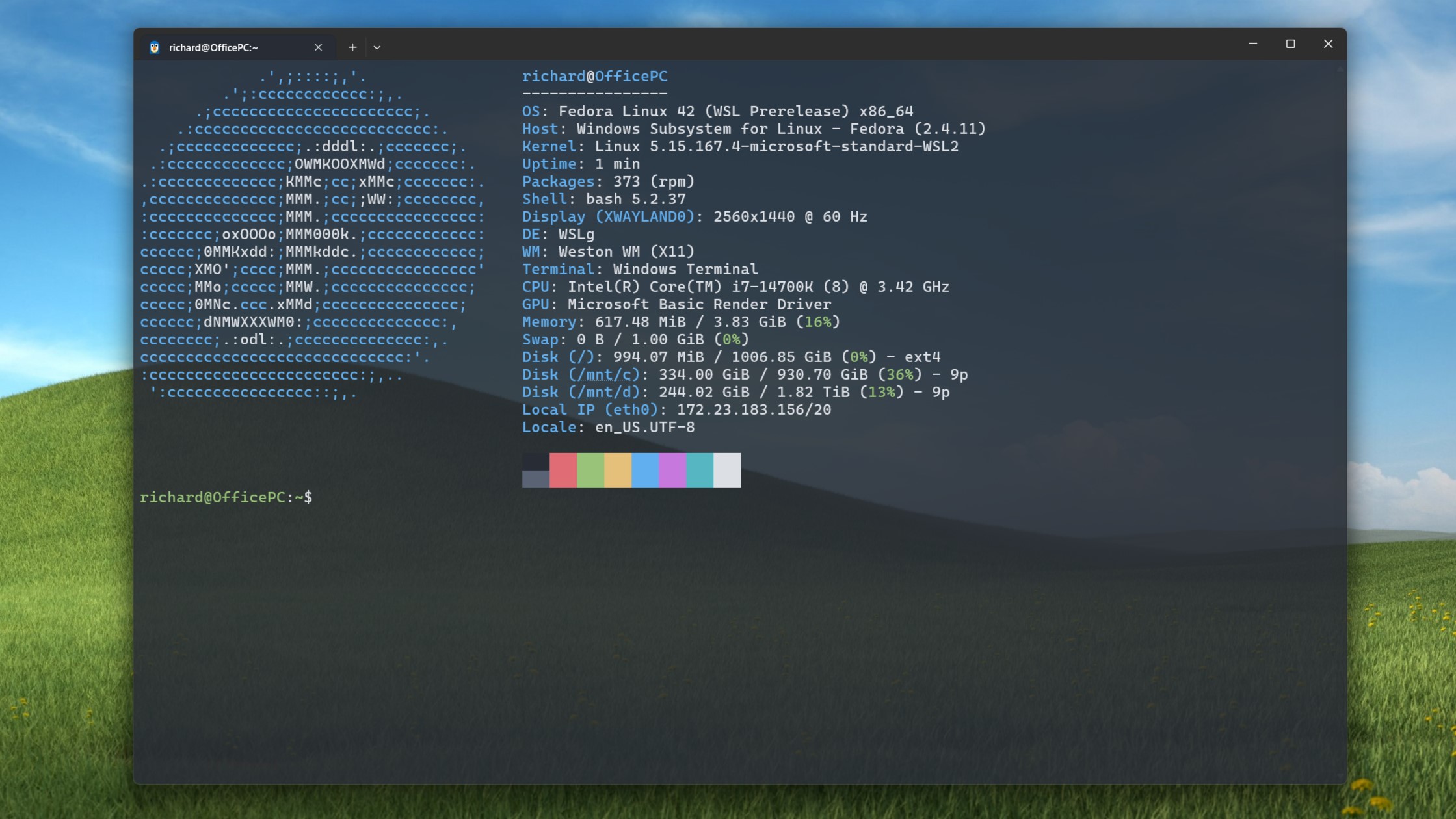How to use System Restore on Windows 10
System Restore can undo system changes to fix system problems, and in this guide, I'll show you how to complete this configuration.
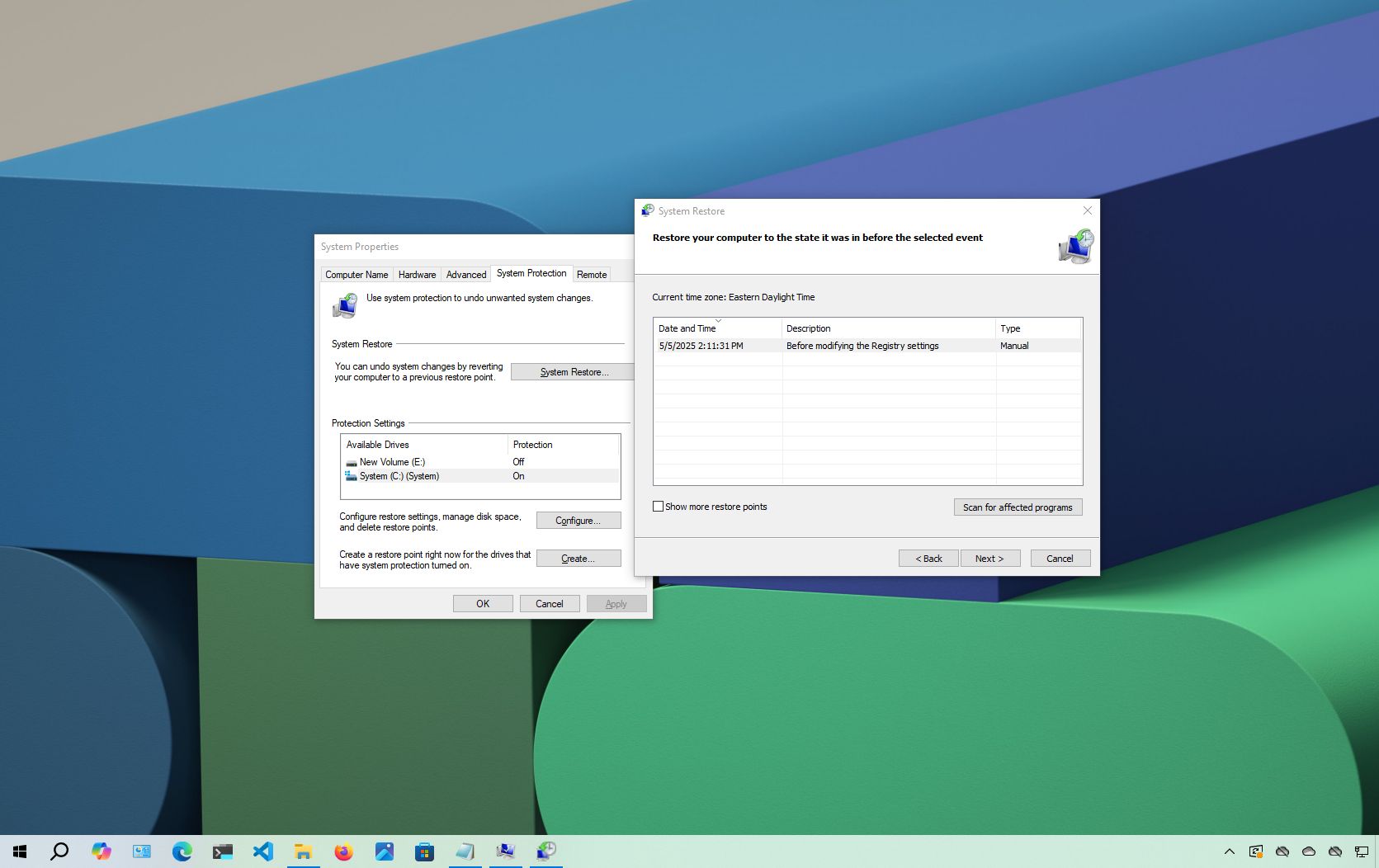
If you’ve ever had a Windows 10 setup suddenly acting up after a driver update, app installation, or Registry tweak gone wrong, you’re not alone. These changes can sometimes cause system issues, which may not always be easy to reverse. That’s where System Restore comes in.
This built-in recovery feature has been designed to create snapshots of your system, known as restore points, capturing the current state of your computer at a specific time. When enabled, the operating system can automatically create a restore point before major events like updates or program installations. If something goes wrong, you can roll your system back to that earlier state, without losing personal files like documents, pictures, or videos.
However, System Restore is turned off by default, which means it won't create restore points until you manually enable it. A lot of users overlook this important step, often realizing too late when they actually need it.
From my experience helping users recover their systems, enabling System Restore is one of the first things I recommend after setting up a new device. It’s not a substitute for a full system backup, but it’s a fast, effective way to undo harmful changes and avoid having to reinstall the operating system.
In this how-to guide, I'll outline the steps to set up System Restore and the steps to recover from problems that may be affecting your computer's normal operation.
Recent updates
These instructions has been updated to ensure accuracy and reflect changes to the process in the operating system.
How to enable System Restore on Windows 10
To enable System Restore on Windows 10, use these steps:
- Open Start.
- Search for Create a restore point and click the top result to open the System Properties page.
- Select the primary "System" drive under the "Protection Settings" section.
- Click the Configure button.
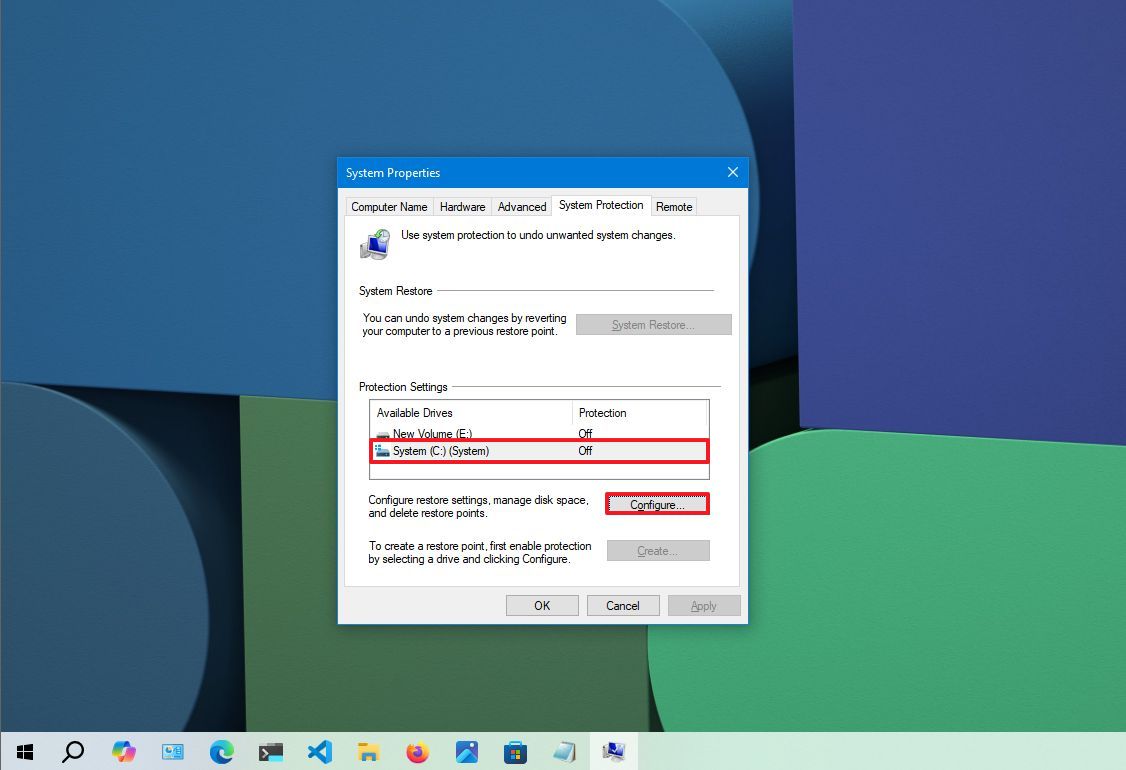
- Select the "Turn on system protection" option.
- Quick tip: Windows 10 can automatically manage space. However, under the "Disk Space Usage" section, you can use the slider to specify the storage for recovery. You will also find a "Delete" button, which you can use to remove all restore points. This can come in handy if you want to free up space or start over with the recovery feature.

- Click the Apply button.
- Click the OK button.
Once you complete the steps, the system automatically creates restore points when applying a new update or specific system changes.
Get the Windows Central Newsletter
All the latest news, reviews, and guides for Windows and Xbox diehards.
System Restore doesn't automatically enable protection for all drives. If you have other drives connected to your computer, you must enable the feature manually on each device.
How to create a System Restore point on Windows 10
Once System Restore is enabled, it will automatically create a checkpoint when it detects system changes. However, if you plan to make configurations manually, you always want to create a restore point manually.
To create a restore point on Windows 10 manually, use these steps:
- Open Start.
- Search for Create a restore point, and click the top result to open the System Properties page.
- Click the Create button under the "Protection Settings" section.
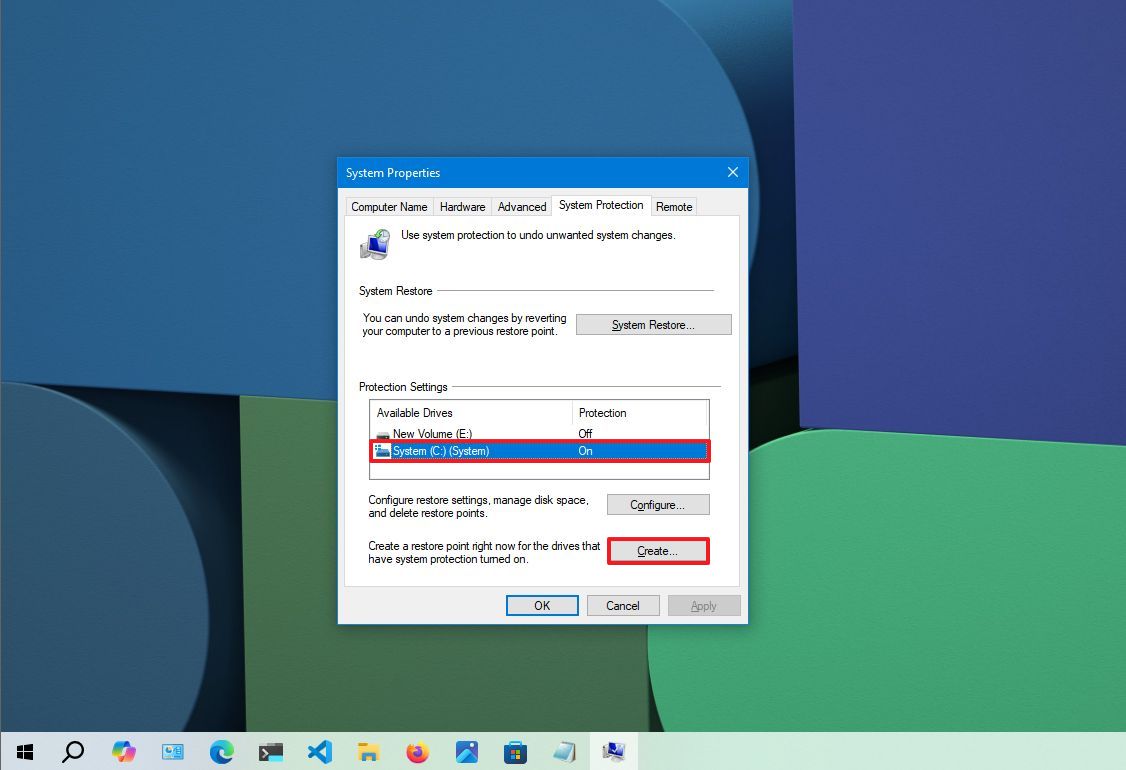
- Confirm a descriptive name for the restore point, for example, Before modifying the Registry settings.
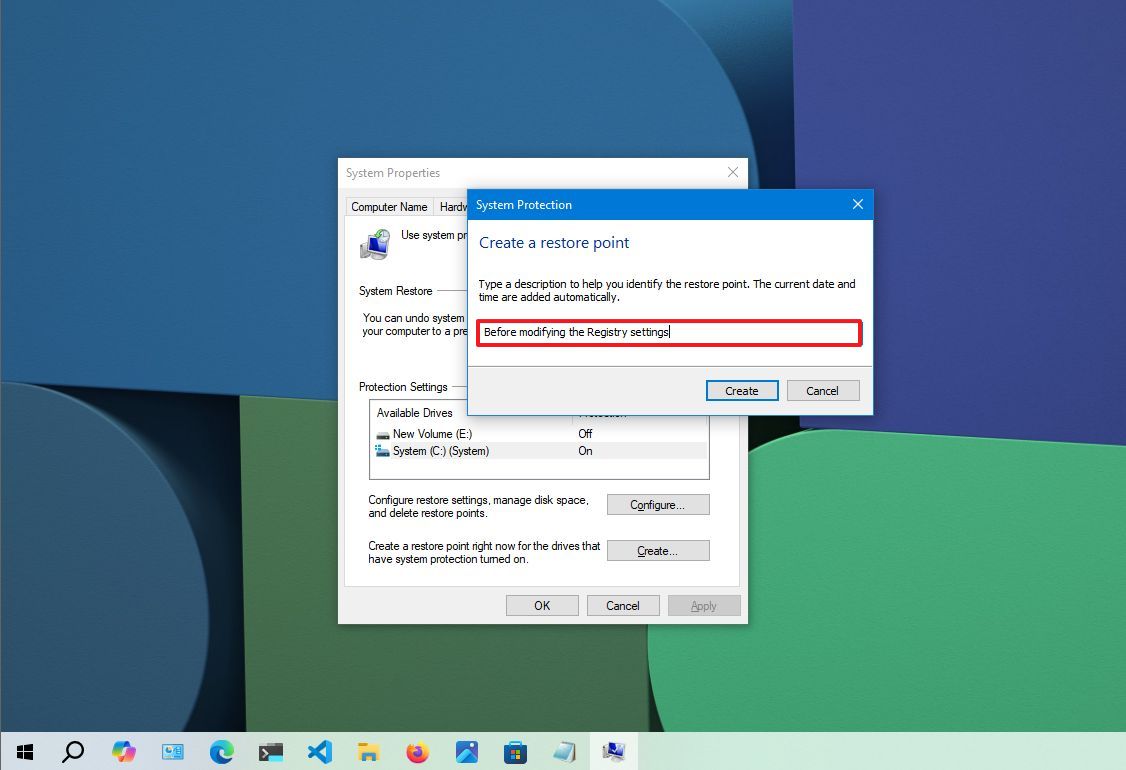
- Click the Create button.
- Click the Close button.
- Click the OK button.
- Click the Close button.
After you complete the steps, you should be able to undo system changes in the event that something happens while installing a new driver, program, or applying changes to the Registry.
How to recover using System Restore on Windows 10
If an error or an unknown problem occurs after installing or modifying system settings, you can use the recovery feature to apply a restore point to undo the changes and fix the issue. If the computer no longer boots correctly, you can complete this task from the desktop environment or the advanced startup settings.
Undo system changes from desktop
When you have access to the Windows 10 desktop, you can revert changes using these steps:
- Open Start.
- Search for Create a restore point, and click the top result to open the System Properties page.
- Click the System Restore button.
- Quick note: If the option is greyed out, no restore points are available.
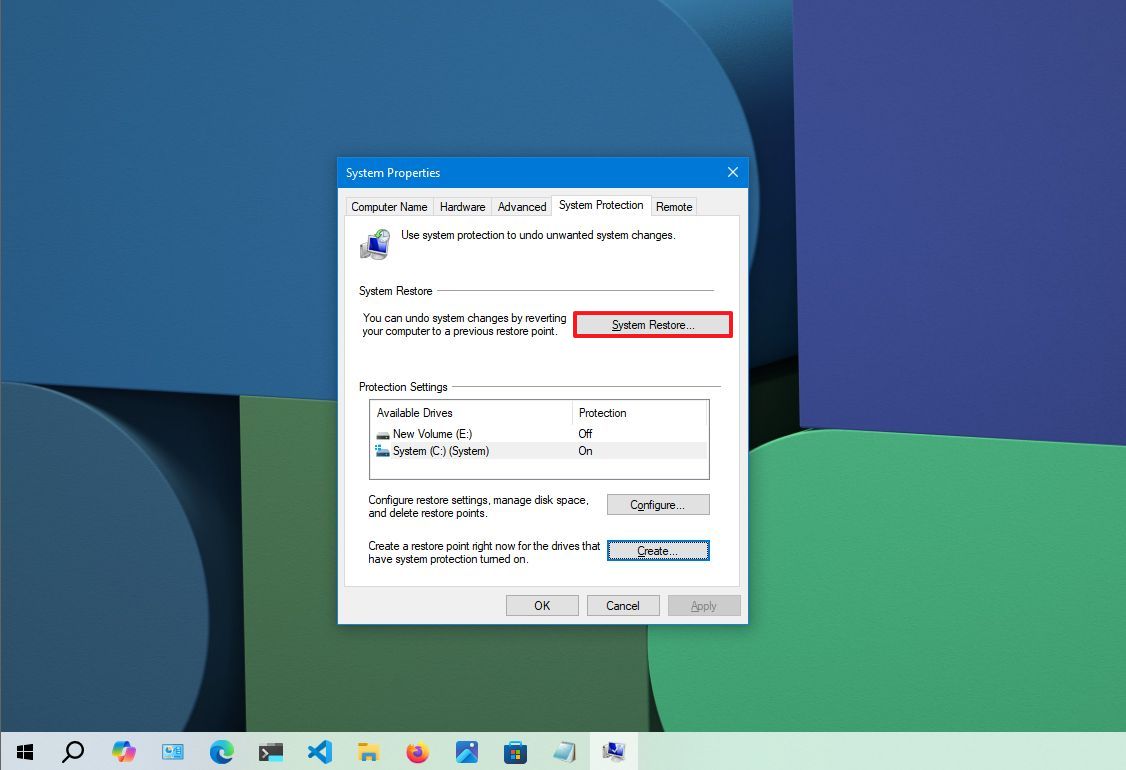
- Click the Next button.
- Select the restore point to undo changes and fix problems on Windows 10.
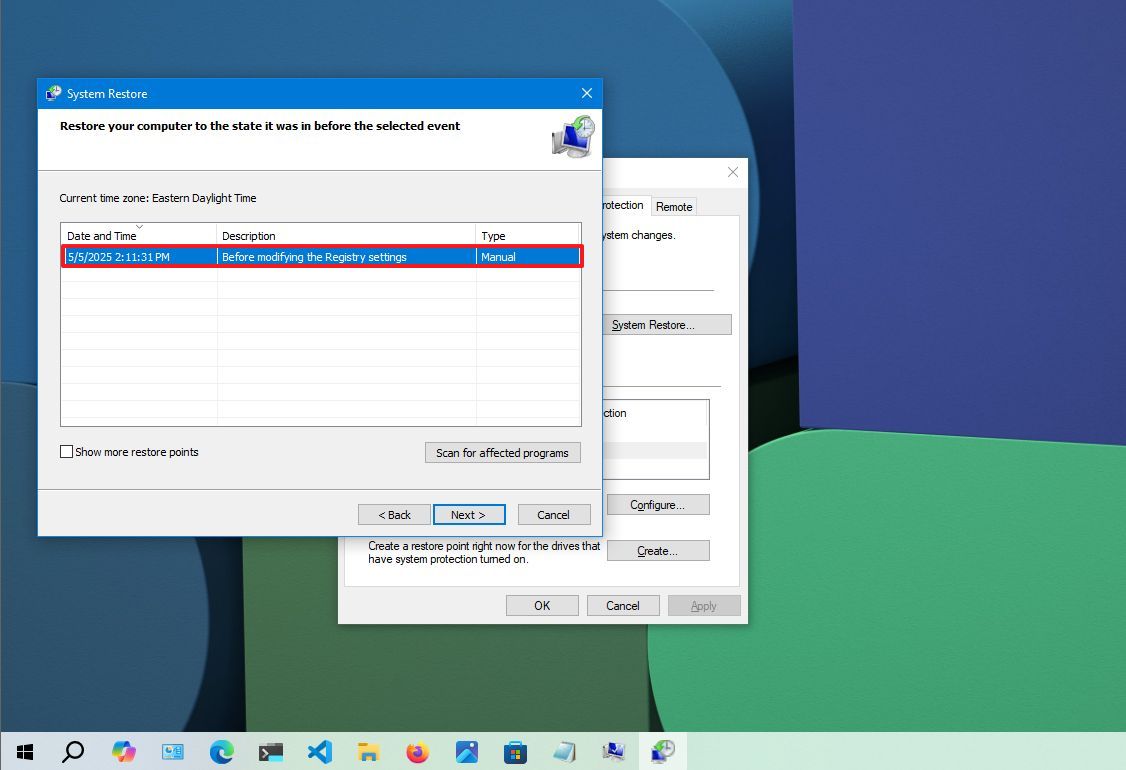
- Click the "Scan for affected programs" button to confirm the apps that will be removed because they were added after creating the original restore point.
- Click the Close button.
- Click the Next button.
- Click the Finish button.
Once you complete the steps, System Restore will restore the computer to the previous working state. If one or more apps were affected, remember to reinstall after the process finishes.
Undo system changes from Advanced startup
Alternatively, you can use the Advanced startup settings to access the System Restore feature to recover the system if the computer doesn't start correctly.
Access Advanced startup
To use System Restore through the Advanced Startup environment, use these steps:
- Start the computer.
- As soon as the Windows logo appears, press the power button to interrupt the boot sequence.

- Repeat steps 1 and 2 two more times. (Or until the device boots into the recovery experience.)
After you complete the steps, you can use the steps below to revert system changes with System Restore.
If you cannot access the recovery environment with these instructions, you can start the device with a Windows 10 installation media, and while in the "Windows Setup" experience, click the "Next" button, click the "Repair your computer" button from the bottom-left corner, and then continue with the steps below.
Undo changes with System Restore
To undo system changes on Windows 10 through the Advanced Startup environment, use these steps:
- Click the Advanced options button.
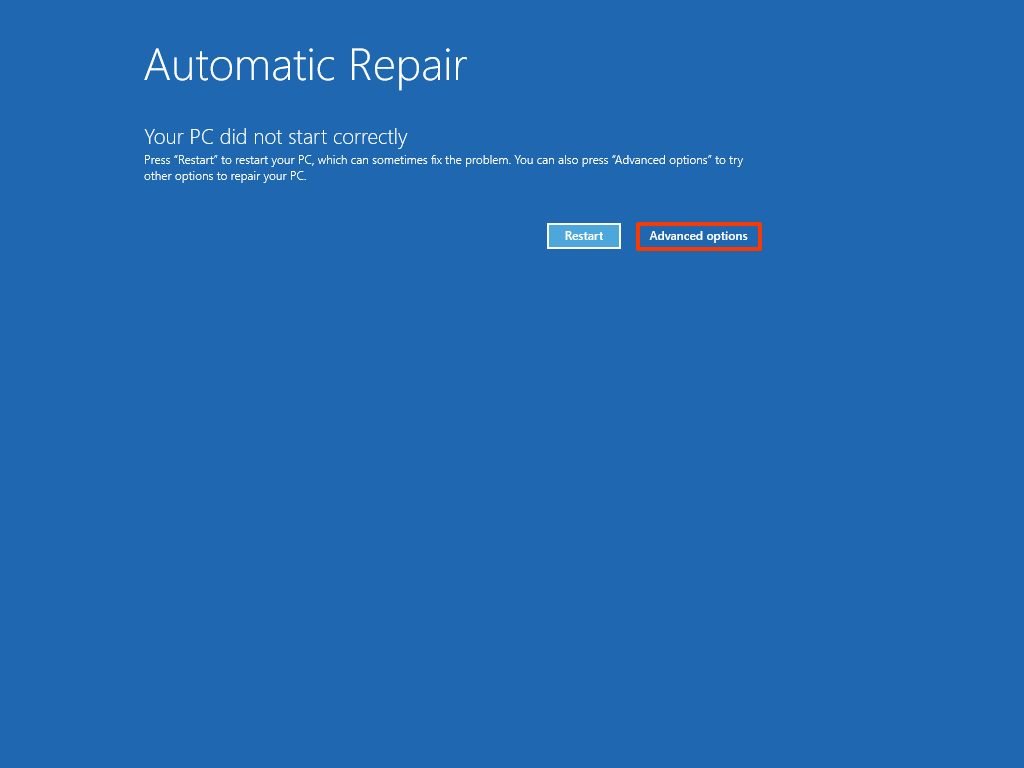
- Click on Troubleshoot.
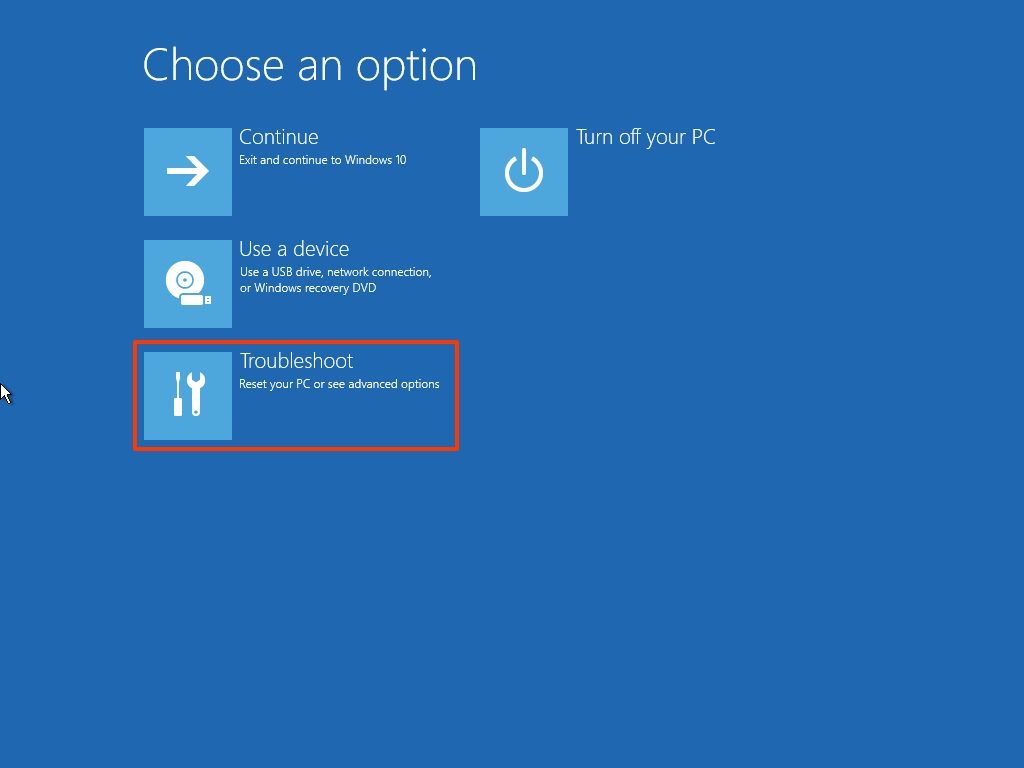
- Click on Advanced options.
- Click on System Restore.
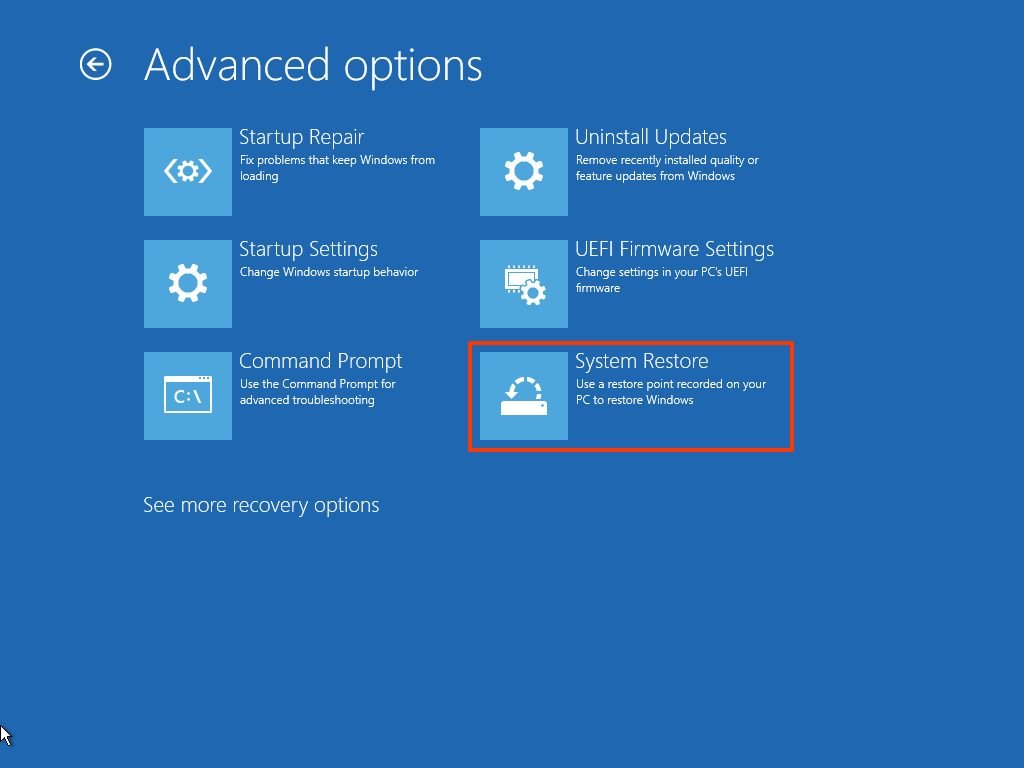
- Select the Windows 10 account.
- Confirm the account password.
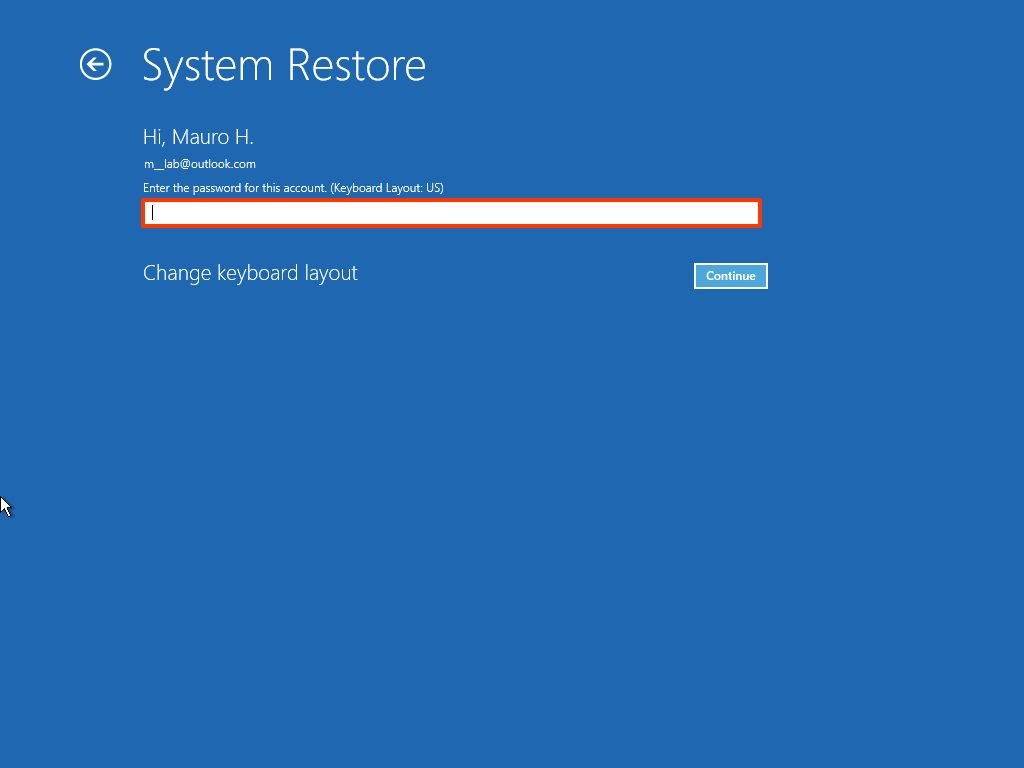
- Click the Continue button.
- Click the Next button.

- Select the restore point to fix the problem with your device.
- Click the "Scan for affected programs" button to confirm the apps that will be removed because they were added after creating the restore point.
- Click the Close button.
- Click the Next button.
- Click the Finish button.
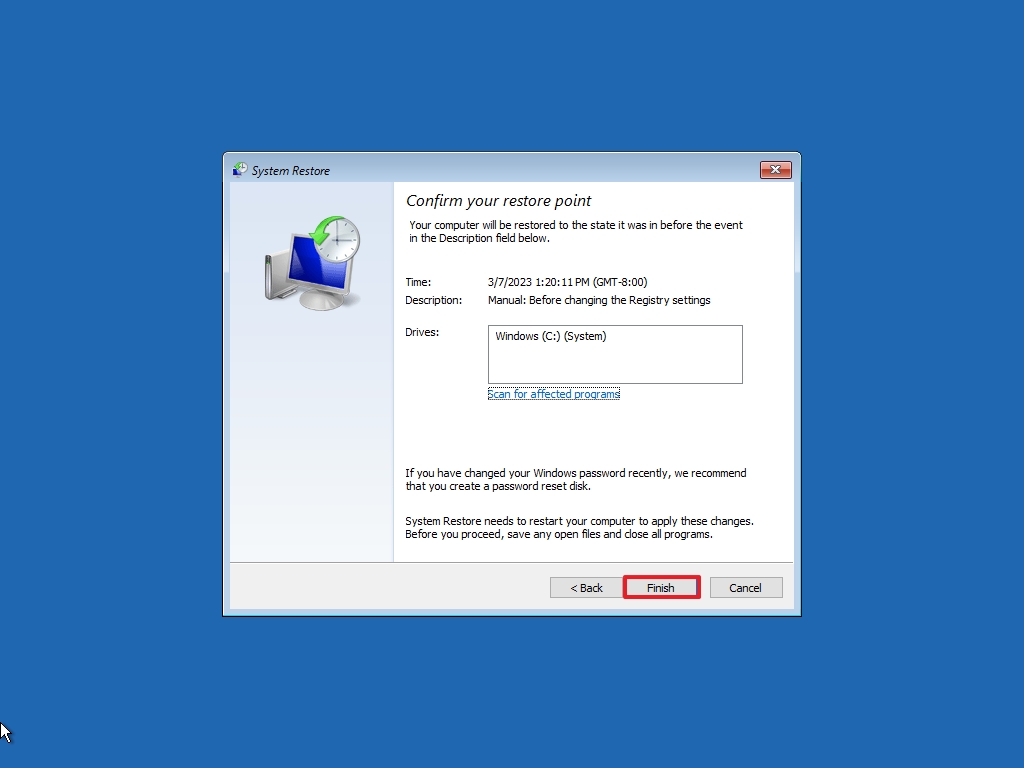
Once you complete the steps, the restore point will apply to undo system changes that may be causing problems, including those preventing the computer from starting correctly.
System Restore is only a feature that recovers a device from configuration problems quickly. It is not a feature to replace a backup solution or an option to reset the computer to the factory default settings.
More resources
For more helpful articles, coverage, and answers to common questions about Windows 10 and Windows 11, visit the following resources:
Mauro Huculak has been a Windows How-To Expert contributor for WindowsCentral.com for nearly a decade and has over 15 years of experience writing comprehensive guides. He also has an IT background and has achieved different professional certifications from Microsoft, Cisco, VMware, and CompTIA. He has been recognized as a Microsoft MVP for many years.
You must confirm your public display name before commenting
Please logout and then login again, you will then be prompted to enter your display name.

